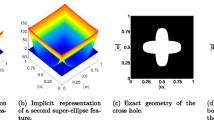Abstract.
This paper deals with the first design phase of three-dimensional speed reducers. Concepts to help designers during the entry-level model definition are presented and, more particularly, those related to the task of geometrical synthesis. From these principles, a specific CAD tool has been built and is also described. A rough model, called a skeleton, is introduced to represent each conventional reducing stage category, thus enabling the automatic formation of entire geometrical models of speed reducers. Shaft orientations and positions are calculated from products of transformation matrices, in the same way as for spatial kinematic chain closure conventional problems. Optimisation techniques are used to obtain a preliminary dimensioning of the structure. The numerical processing is achieved progressively in three steps in order to improve the final convergence and, if necessary, to enlighten further the designer on failure origins within specification data. Three examples are given to illustrate both the creation of the geometrical model and the way results are obtained.
Similar content being viewed by others
Author information
Authors and Affiliations
Rights and permissions
About this article
Cite this article
Fauroux, J., Sartor, M. & Paredes, M. Using the Skeleton Method to Define a Preliminary Geometrical Model for Three-Dimensional Speed Reducers. EWC 16, 117–130 (2000). https://doi.org/10.1007/PL00007189
Issue Date:
DOI: https://doi.org/10.1007/PL00007189




